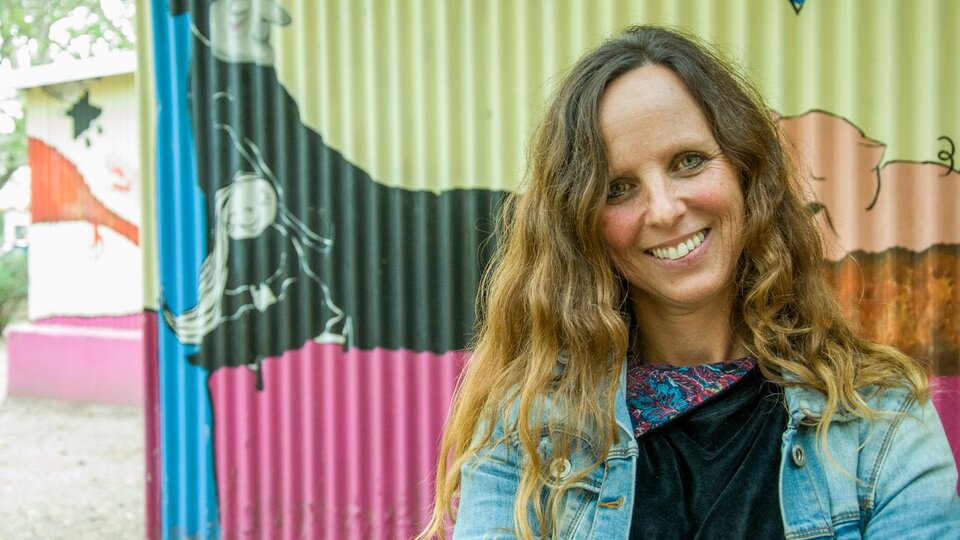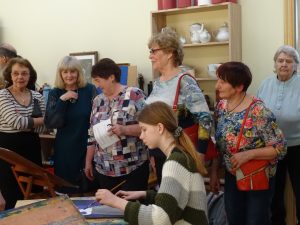When the clock struck half past six in the morning of that January 12, 2011, the day had lightened outside for a while, and Paula -who did not see the sunrise- knew that she could finally cry. It was exactly nine months and ten days since she had resolved not to shed a single tear. She decided at the exact moment the doctors read her the diagnosis of her daughter Pilar de ella, five years old: brain tumor and six-month survival.
In the early morning of that January 12, Paula held Pili against her chest until she felt the last heartbeat: “last night was especially hard, hugging each other, helping each other. That’s how I lived it. It was like giving birth backwards, and it was all so, so much, that when I left the clinic, I felt that I was taking her by the hand”.
No one can tell anyone what to do with their pain. Each one does what he can with what he has and with what he is. With what he brings on his back. In such a way that Paula, an atheist, daughter of atheists and without mystical anchor, sat at the foot of a large tree in the Saavedra Park in La Plata, with a blanket and the eighty books that she had in her house, inviting them to read. . Among them, “From the other side of the tree”, Pili’s favorite book, by the Brussels author Mandana Sadat.
There he had a second silence, because “he had to know what to do with sadness, he needed to turn it into a tribute to life, that could not be nothing. With Pilar’s father, despite the fact that we had been separated for a few years, we decided -when they gave us the diagnosis- that we had to go out, travel, be happy in what was left of their time. Laugh, love each other, eat ice cream, hug each other a lot, a lot”.
Now that solitude had to be turned into a collective celebration of Pilar’s existence and for that “I clung to the philosophy of the Mothers and Grandmothers of Plaza de Mayo, and go from tragic pain to the collective. That helps, it caresses you, it softens your anguish.”
To those eighty books were added others from friends, relatives, former schoolmates, neighbors. Everyone bringing books. Then Paula had the idea of making a children’s library in the middle of that park, asking the municipality to lend her a room that was right there, abandoned, which is where we are sitting now, under the huge tree (which today is called the tree of desires) watching boys and girls come and go all the time. “La biblio” (as Paula names it), is called the Popular Library on the Other Side of the Tree, and has twenty-three thousand copies.
Twelve years have passed since that January: “The library as such was founded on April 2, which is the date of Pilar’s birth. Since it was going to be by caesarean section, I chose her so that her birthday falls on a holiday and it was the day she would be six years old ”.
The mate prevails in the conversation and she divides her attention with the troop of children who come and go, who go in and out. “I am a teacher and therefore the book has a special importance for me, in all my life. The book takes you beyond, where you dream”. And he remembers that perhaps he learned to cry his eyes out when Pachi, his mother, read him My Lime Orange Plant, of which he especially remembers the image of the moment when Zé, the main character of the novel, a very poor boy, dresses the best he can to go to receive the gift for children’s day, and he takes so long to get ready that when he arrives at the square there are no toys. So “you have to be very careful with childhood. Take everything into account, take care, preserve, put all the focus on childhood, because that marks and is where, in the end, we always return. And that’s what we do in the library. It doesn’t matter how many children there are.” At that point we stop for a while because “there are five hundred that come on weekends, during the week about a hundred a day, if the weather helps there are more” and he says it with a calmness that contrasts with my nerves from seeing so many children together reading, listening to stories and running from one side to the other. For me they are like a thousand.
Paula was accommodating her life little by little, together with her partner and her two grown children, the mourning was leaving her room to live, even with the constant presence of Pilar: “she is always present. That doesn’t go away. There are people who say that you have to let go and it seems stupid to me, how can you let go? You never let go of your children and also the memory of what happens to you is part of who you are and what you do with what happens to you. These new ideas that everything is only present and future seem perverse to me.
Just a couple of years ago the pain eased a bit and you can talk about it with something similar to calm, but never (since the biblio started) did you stop building that new dream that today has eleven thousand members, thirty-three people between workers, workers and volunteers. He tells it looking inward and while we finish the mate, he smiles: “today this is crazy, the kids from Casa Cuna come, then visitors from other schools, then the neighbors. The boys like to come, there are teachers who tell stories and here everything is touched, used, enjoyed. There is no such thing as not touching. Calculate that we lend seventy books a day, except on weekends when we lend four hundred, and that is another issue that we put together from another logic, that of trust: here nobody is going to ask you for your ID, you give the data and you we believe, you take a book and return it and then another, and so on. The basis is trust and solidarity. The same happens with the partners, they pay five thousand pesos per year, but if it is not enough for you, you join the same”.
The room that was abandoned when they asked the municipality for it, grew and is now a large library room in the middle of the park, whose walls are drawn with the designs from the book On the Other Side of the Tree, with a modification: the colors that Pilar gave her. had added to the original book.
A few years ago, the author of the book was in Argentina and learned the story, saw the book recolored by Pilar and had another edition made with a dedication: “For Pili and for all the children who read in her wonderful library.”
In front of the library, the mate that is dying under the tree continues, surrounded by dream catchers of all imaginable colors, a gift from visitors, looking at the library doors that never close. Paula has silences without absence, maybe Silvio singing Solo el amor sounds in her head, so I extend the mate to her and she comes back: “even with two degrees below zero they don’t close, they’re always open”.
What attracts attention is an old bicycle colored up to the wheels, which is, of course, his eternal bicycle, which once again looks and smiles and sighs that “the library is the synthesis of the community. Look, everything here is a donation from neighbors, even these chairs where we are sitting. This one, for example, was brought by a neighbor who said it had such beautiful colors that she thought it was just for here.
Now is the time to look, walk through the park, take in that universe with your eyes, go through all the designs that dress the exterior of the building and remember that one afternoon in 2020, in the midst of a pandemic, there was a fire resulting from a fight where the library had nothing to do with it, but it destroyed part of the books and those that remained had to be cleaned of soot with an eraser, one by one. And Paula looks inside and smiles again: “the help of the neighbors was essential. Hundreds of neighbors cleaned twenty thousand copies and helped rebuild the space and donated enormous amounts of books.
Something similar happened when the municipality of La Plata commented on the project to build a beer patio there: “the next day we had hundreds of people from La Plata, and the next day the municipality called me and apologized and the matter was over.”
The birds warn that at this time of year the sun goes down early and this little woman with clear eyes and forty-seven years old, dreams of herself with grandchildren “to continue maternity, but my children always give the same answer” ah, yeah, well…” and this time he laughs out loud.
Pilar’s mourning took her through her own, unique, non-transferable time. The situation that her life confronted her put her in front of a vertigo that she ended up giving in this Popular Library On the Other Side of the Tree.
We said goodbye between children running and I remembered that when he left the clinic, he felt -forever- that he was leading his daughter by the hand. And no one can comment on that. On the other hand, yes, I can attest that today Paula leads a thousand children by the hand, to where she dreams.


